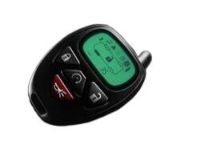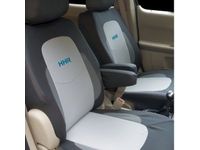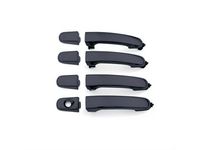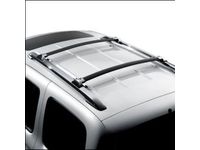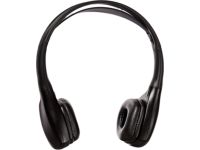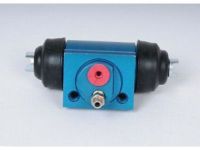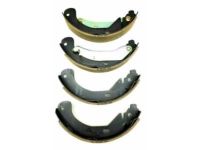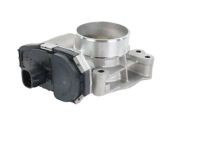Why choose GMPartsGiant
- Large Inventory
The best site to buy Chevrolet HHR genuine parts for years has been GMPartsGiant.com. We're the best online parts and accessory store for your Chevrolet HHR. GMPartsGiant.com offers a large parts and accessory inventory to cover all your vehicle's repairs. Feel free to browse through our genuine Chevrolet HHR parts and accessory catalog to find all your vehicle's needs.
- Fast Shipping Times
All of our Chevrolet HHR auto parts and accessories are expedited directly from verified dealers and backed by the manufacturer's warranty. Our experienced team ensures the orders are packed to provide quick transit times. The majority of the orders are shipped out within a couple of business days to get the parts out to you as fast as possible.
- Low Prices
Our low prices say it all. You can rest assured that you will always receive unbeatable prices on OEM Chevrolet HHR parts. Our giant inventory is beyond compare and has everything you need at an extraordinary value not found anywhere else. Whether you're restoring an old vehicle or upgrading the performance of your vehicle you can count on the quality of our products without hurting your bank account.
Popular Genuine Chevrolet HHR Parts
- Engine Parts View More >
- Front Suspension, Steering Parts View More >
- Fuel System, Exhaust, Emission System Parts View More >
- Brakes Parts View More >
- Transmission - Automatic Parts View More >
- Frames, Springs, Shocks, Bumpers Parts View More >
- Cooling System, Grille, Oil System Parts View More >
- Interior Trim, Front Seat Trim, Seat Belts Parts View More >
Shop Genuine Chevrolet HHR Parts with GMPartsGiant.com
The Chevrolet HHR is a five-door, five-passenger, front-wheel-drive crossover produced from 2005 until 2011. The HHR made use of a variety of engines; the 2.0 L (120 cu in) Ecotec turbo I4, 2.2 L (130 cu in) Ecotec I4, and 2.4 L (150 cu in) Ecotec I4. Models in 2006 were powered by a 2.2L (134 cu in) Ecotec I4 version that came with 143 bhp (107 kW) and 150 lb. ft. (200 Nm) of torque. Models in 2007 used a 2.2L (134 cu in) Ecotec I4 engine that produced 149 hp (111 kW) and 152 lb. ft. (206 Nm) of torque. Models in 2008 used a 2.2L (134 cu in) Ecotec I4 engine. All these models are equipped with potent transmissions; the 5-speed F35 (MU3) manual, 5-speed Getrag F23 manual, and 4-speed 4T45 automatic transmissions. The power is transmitted to the road by the front-wheel drive (FWD) with a 5-speed gearbox that could help reach a top speed of 180 km/h or 112 Mph. The HHR could go from 0 to 100 km/h (0 to 62 mph) within 9.1 s. The Chevrolet HHR features a large space which measured 4,475 mm (176.2 in) in length, 1,755 mm (69.1 in) in width, and 1,605 mm (63.2 in) in height. While the SS level is 4,480 mm (176.4 in) in length and 1,590 mm (62.6 in) in height. The HHR comes with power windows and door locks, dual front SRS airbags, a Driver Information Center, a four-speaker audio system, a tilt-adjustable steering wheel, keyless entry, and cloth seating surfaces. The HHR could also be ordered with a power-adjustable front driver's seat, a Pioneer seven-speaker premium audio system with an external amplifier, and luxury leather-trimmed seating surfaces with dual heated front seats.
Owners of Chevrolet HHR vehicles have identified several recurring issues after prolonged use. Firstly, a prevalent cooling problem arises from leaking coolant, usually detected at the front-center of the vehicle, causing the Low Coolant Light to illuminate. Frequent coolant refills are necessary, and engine overheating, indicated by steam from the radiator, is common. These issues often negatively affect engine performance, and a damaged or collapsed radiator hose or a clogged water pump gasket may be the culprit. Secondly, engine problems have been reported, including a noticeable fuel odor and frequent engine misfires, making the car difficult to start. These issues, along with slow acceleration, poor fuel economy, and an illuminated Check Engine Light, can typically be traced back to a faulty spark plug or fuel injector. Lastly, to enhance the Chevrolet HHR's longevity, regular replacement of easily worn-out parts such as windshield wipers or wiper blades, and wheel covers is recommended.
When it comes to quality, there's no better choice than OEM parts. Manufactured by Chevrolet, they undergo the strict testing procedures and are made from top-quality materials to guarantee excellent dependability and long-lasting durability. When it comes to choosing the right parts, like Front End Sheet Metal, Heater, Body Moldings, Sheet Metal, Rear Compartment Hardware, Roof Hardware for your vehicle, the solution is simple: shop from our wide selection of genuine Chevrolet HHR parts, such as Transmission - Manual at the most competitive prices available on GMPartsGiant.com. We prioritize your convenience, 100% satisfaction, and peace of mind by offering a user-friendly catalog, manufacturer-warranted OEM Chevrolet HHR parts, a hassle-free return policy, and swift delivery service.
Chevrolet HHR Parts Questions & Answers
- Q: How do you remove the wheel cylinder on Chevrolet HHR?A: First, hinder the front wheels so that the vehicle does not move. Afterwards, slacken the lug nuts at the rear wheel and raise the tail end of the vehicle, holding it firmly onto jack stands. Remove both rear wheel and let off parking brake before removing brake drum. After that give a thorough clean around wheel cylinder area and remove any rubbish or foreign object. At the back of backing plate unscrew brake line fitting ensuring that you don't pull away brake line from wheel cylinder. Take out bleeder screw for wheel cylinder followed by its cover together with mounting bolts for wheel cylinder. Then release it from backing plate to which it is attached.Remove bleed screw cap.Taken out are mounting screws for fixing wheel cylinder on backing plate.Place it in position and attach brake lines' socket finger tight.Fix on again mounting bolts as required.Securely tighten up this bolt attaching brake lines.Plug in bleeder screw to close external opening after replacing cap.Then install on hub flange first shoes intended for brakes.Reinstall both wheels after putting lug nuts back on.Bleed a braking system, lower car to ground then secure each lug nut with correct torque specifications.The brakes should be properly checked before driving this automobile into normal traffic situations.
- Q: How do you remove the Brake Shoe on Chevrolet HHR?A: The removal of the rear brakes on 2009 and earlier models begins by loosening wheel lug nuts and raising the vehicle on jackstands. Release parking brake, remove wheel. Pull off the spring from the brake adjuster assembly, then take out adjuster and adjuster lever. With pliers, lift lock end of shoe retractor spring then free trailing shoe. Lower shoe and lever connected to parking brake then raise retractor spring and remove leading shoe. Finally, depress tab at cable end then twist off trailing shoe/parking brake lever as well. For installation purposes however clean backing plate, lubricate contact points for shoes, center retractor spring in its mount and secure it there. The new leading brake shoe must be installed first, connect the parking brake cable back to the lever then install new trailing shoe/lever. Clean and lube adjuster threads; insert it back between shoes with adjuster lever together with spring in place again. To turn star wheel while keeping holding up their levers in order adjusting shoes only needs done by you. Check drum for any damage after installing it on axle flange again. Pump brake pedal listening for any rubbing so that you can make necessary adjustments if needed again on your drive wheels one more time finally install the wheel lower vehicle check operation of brakes before driving once more! On 2010 or later models however this process is changed slightly differently than I thought because Remove adjuster from shoes first rather followed by removing hold-down springs for shoes lastly do not detach lower return springs doing this will result into removing both shoes completely right, In order to remove trailing shoe/parking brake lever from parking brake cable However attach upper return spring to trailing show along with installing onto them holdspring Install lower return spring before moving onto cleaning and lubing threaded section Reinstalling however means that one put an adjusting between retainer clips which also includes upper returnspring going through front side leading Reclaim their adjuster level as well as spring and recheck drum damage that might have happened. Attach brake drum, pump brake pedal, then make necessary adjustment. Finally, reinstall wheel lower vehicle makesure brakes are working properly before driving.
- Q: How to inspect and clean the throttle body on Chevrolet HHR?A: During the inspection of the throttle, verify that the throttle linkage operates smoothly. To remove any build-up, remove the air intake duct and inspect the bore. If it is dirty, clean it using a solvent or carburetor cleaner that is safe for oxygen sensor systems and catalytic converters. To begin the removal process, the cable should be disconnected from the negative battery terminal. The air intake duct and resonator should be removed. The throttle body connector(s) should be disconnected, along with any throttle body hoses and vacuum hoses.




















































